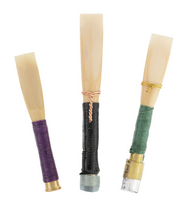A Brief History Of The Lower Oboes: Chapter Two, English Horn
Posted by Clair Cangialosi, DMA on Oct 6th 2025
Table of Contents:
- Introduction and Baroque Era
- The Classical Period
- Romantic Period
- 20th C and Modern Usage
- Conclusion
- End Notes
Introduction and Baroque Era
This is the second installment in our series about the history of the lower oboe-family instruments. Chapter 1 covered the oboe d’amore. This chapter will focus on the English horn.
The English horn is a tenor-voiced instrument, pitched in F, a perfect fifth below the oboe. In his essay about the lower oboes, musicologist Michael Finkelman explains that the instrument likely originated in what is now southern Poland around 1718 (which at the time was German-speaking and under Prussian political control). These early English horns, made by the Weigel family of Breslau, were built with a curved body and a flared wooden bell. (1)
The earliest surviving written record of the English horn was in a set of cantatas by church composer Tobias Volkmar from 1723. Although the exact date is not known, it was also around this time that the flared wooden bells were replaced with the bulb bells as we know them today. (2) See figure 1, at right.
There were other types of tenor oboes used in early music, the taille de hautbois, the oboe da caccia, and the vox humana, which are outside the scope of this post. They were each eventually supplanted by the English horn.
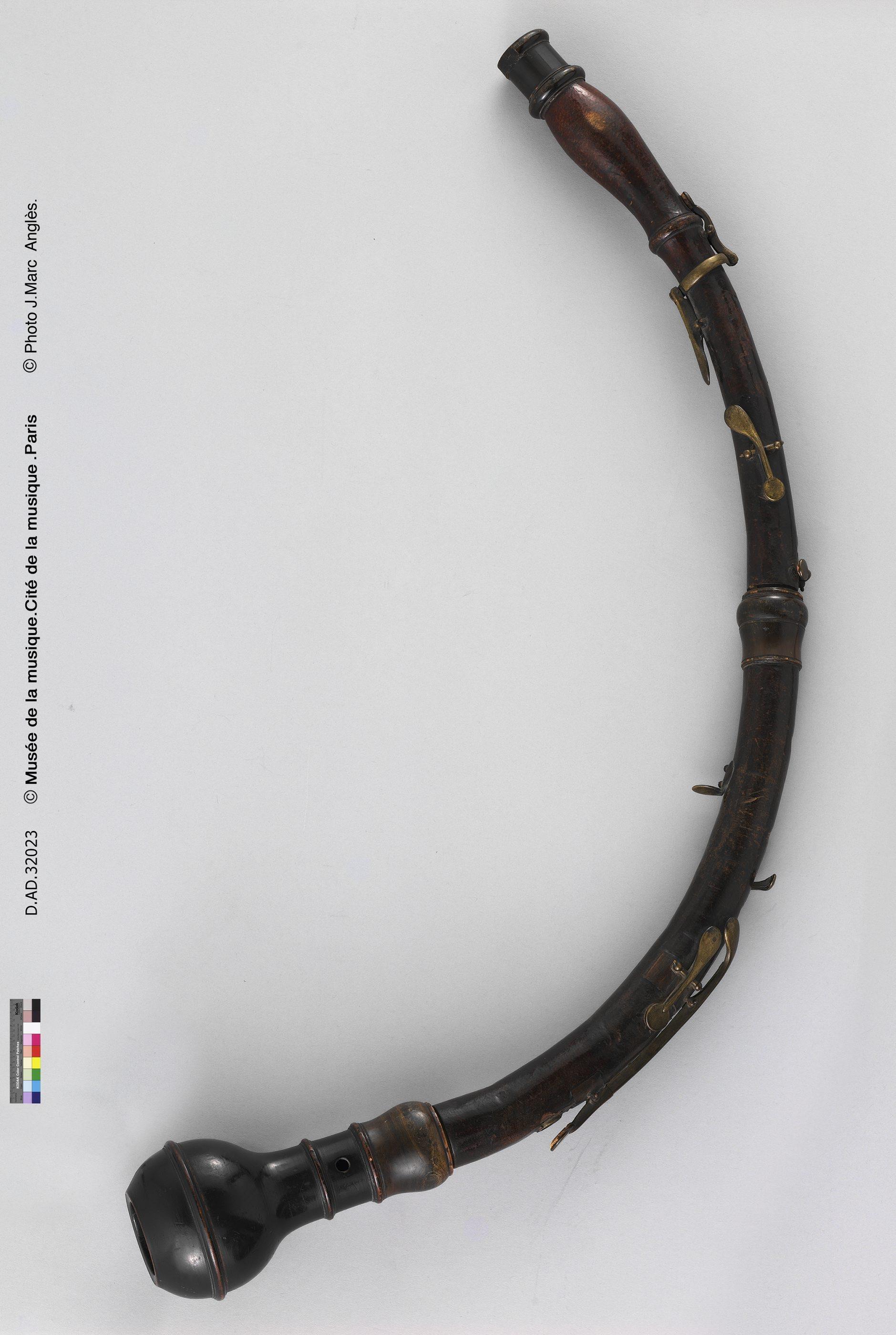
Why is it called an English horn if it was invented in a German-speaking place?
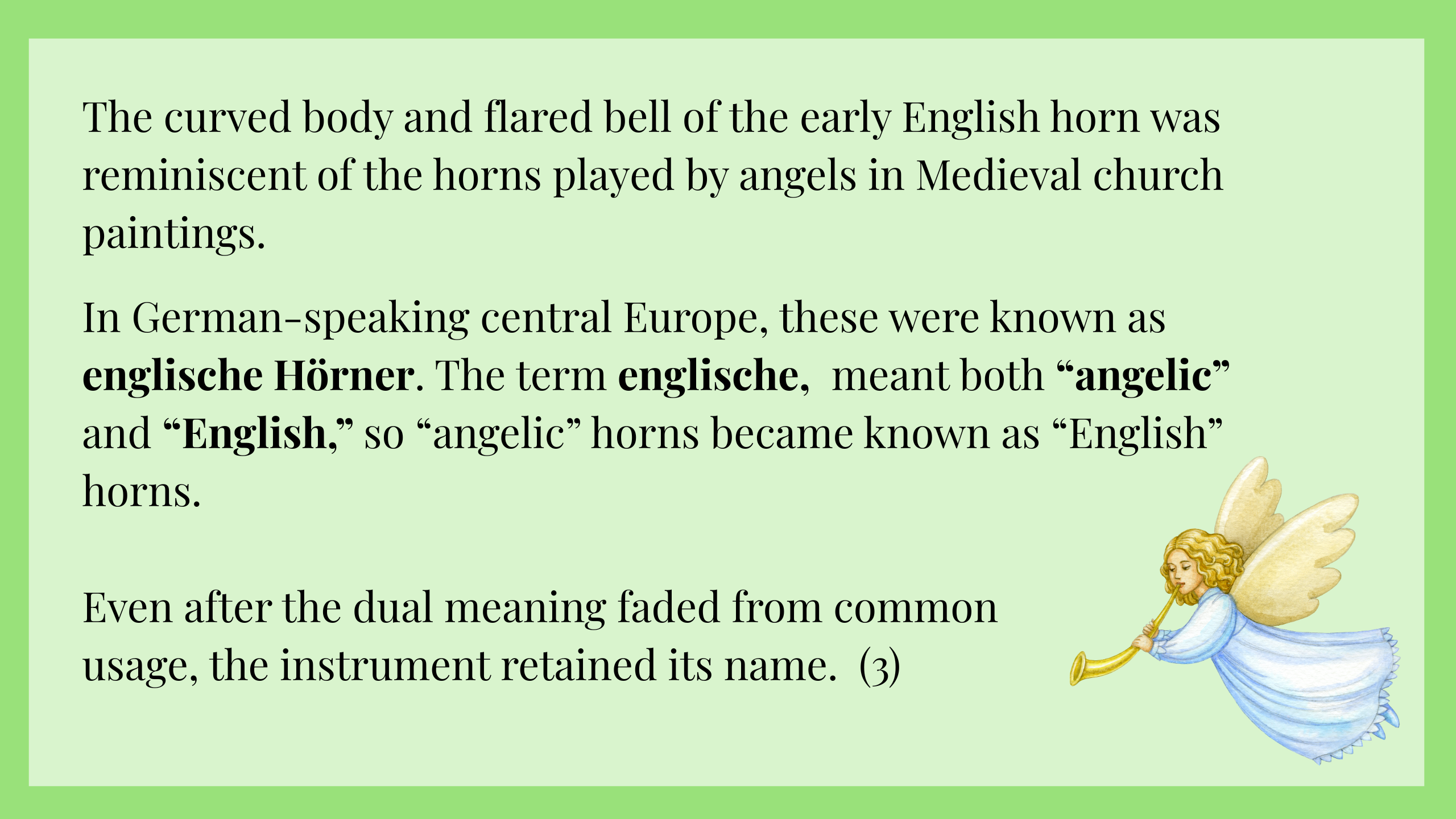
The Classical Period
The English horn began to gain popularity in the second half of the 18th century, particularly in Vienna and Italy. Opera and symphonic composers alike chose the instrument for its unique tone quality.
For example, Christoph Willibald Gluck also used English horns in several operas, one example being the 1762 version of Orfeo ed Euridice. The recording below is sung by Derek Lee Ragin and the English Baroque Soloists. (4)
Joseph Haydn also called for a pair of English horns in his 1764 Symphony no 22, Hob I-22, The Philosopher, performed here by the Orchestra UniMi. (5)
The English horn was popularized in Venice (and later elsewhere in Italy) in large part by Italian oboe virtuoso Giuseppe Ferlendis (1755-1802). In addition to touring in Italy and Germany as an English horn soloist, he also wrote two concertos for English horns, which were published after his death. (6) The recording below is the first movement of the Concerto in F Major, performed by Marino Bedetti and the Giuseppe Ferlendis Orchestra. (7)
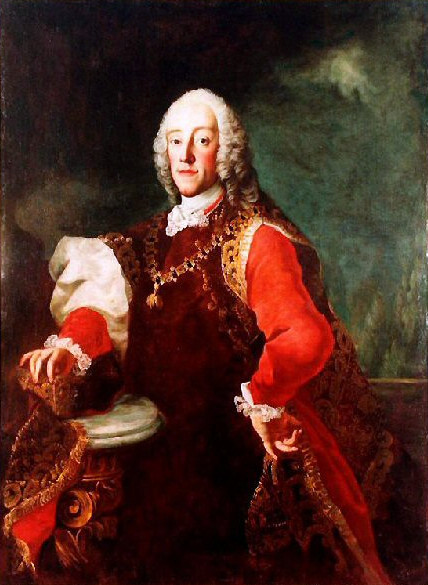
Another important usage of the English horn during this period was Harmoniemusik- wind chamber ensembles ranging from three to twelve players. These works were mostly written for the court ensembles of various noblemen. Notably, Prince Joseph Adam Johann Nepomuk Schwarzenberg of Bohemia, (figure 2) one of Vienna’s wealthiest residents, employed several oboists- Ignaz Teimer and his three sons. Much of the English horn repertoire (both solo and chamber) from the 1780’s and the following three decades was written for the youngest Teimer brother, Philipp Matthias Teimer (1761-1817). (8)
It was also Philipp and his two brothers for whom Ludwig van Beethoven’s
Trio in C Major, op. 87, was written in 1795. (9) The piece is performed below by Marilyn Zupnik, Kathryn Greenbank, and Elizabeth Starr Masoudnia. (10)
Instrument Technology: A Whole New Angle
Up to the 1770’s, the English horn was built with a curved body. (figure 3) In an attempt to bring the lower joint closer to the player, an angled version of the instrument was introduced in 1775. These were made principally by Stefan Koch in Vienna, featuring an angled “elbow connecting the upper and lower joints. This new model may have been easier to handle than the older curved instruments, but was probably still not particularly convenient- they were only in use until 1835. (11)
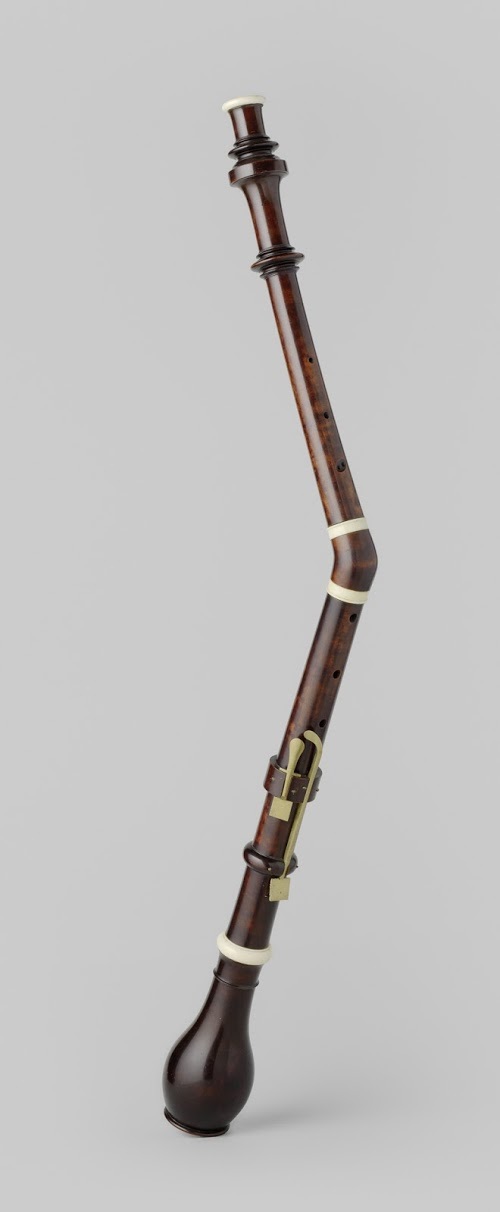
The Romantic Period
The English horn finally came into its own during the Romantic period. The instrument gained widespread use in Paris and elsewhere in Europe. Many beloved pieces involving the English horn were written during this time.
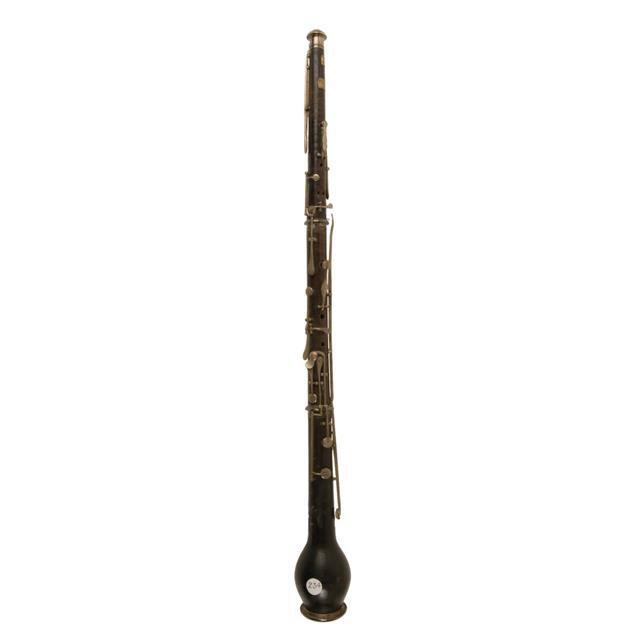
Similarly to other woodwinds, the keywork of the English horn changed rapidly during the nineteenth century. In the first three decades of the century, there were several types available. The Viennese angled model (pictured above) was produced concurrently with a gently curved instrument made by the Triebert firm in Paris- both available with up to twelve keys. (12) Examples of each of these instruments are held in the Musical Instrument Museum of Brussels.
Perhaps the most influential change to the English horn was made by French maker Henri Brod in 1835. His cor anglais moderne was the first straight-bodied English horn with a curved bocal. (figure 4) This instrument had a more resonant sound and was significantly easier to play than its predecessors. Brod’s design was subsequently used by Loreé as what would become the blueprint for modern English horns. (13) The full conservatoire system was added to the English horn in 1906.
The momentum that the English horn had gained in the eighteenth century continued to grow into the nineteenth century. In his 1858 orchestration treatise, composer Hector Berlioz describes the English horn:
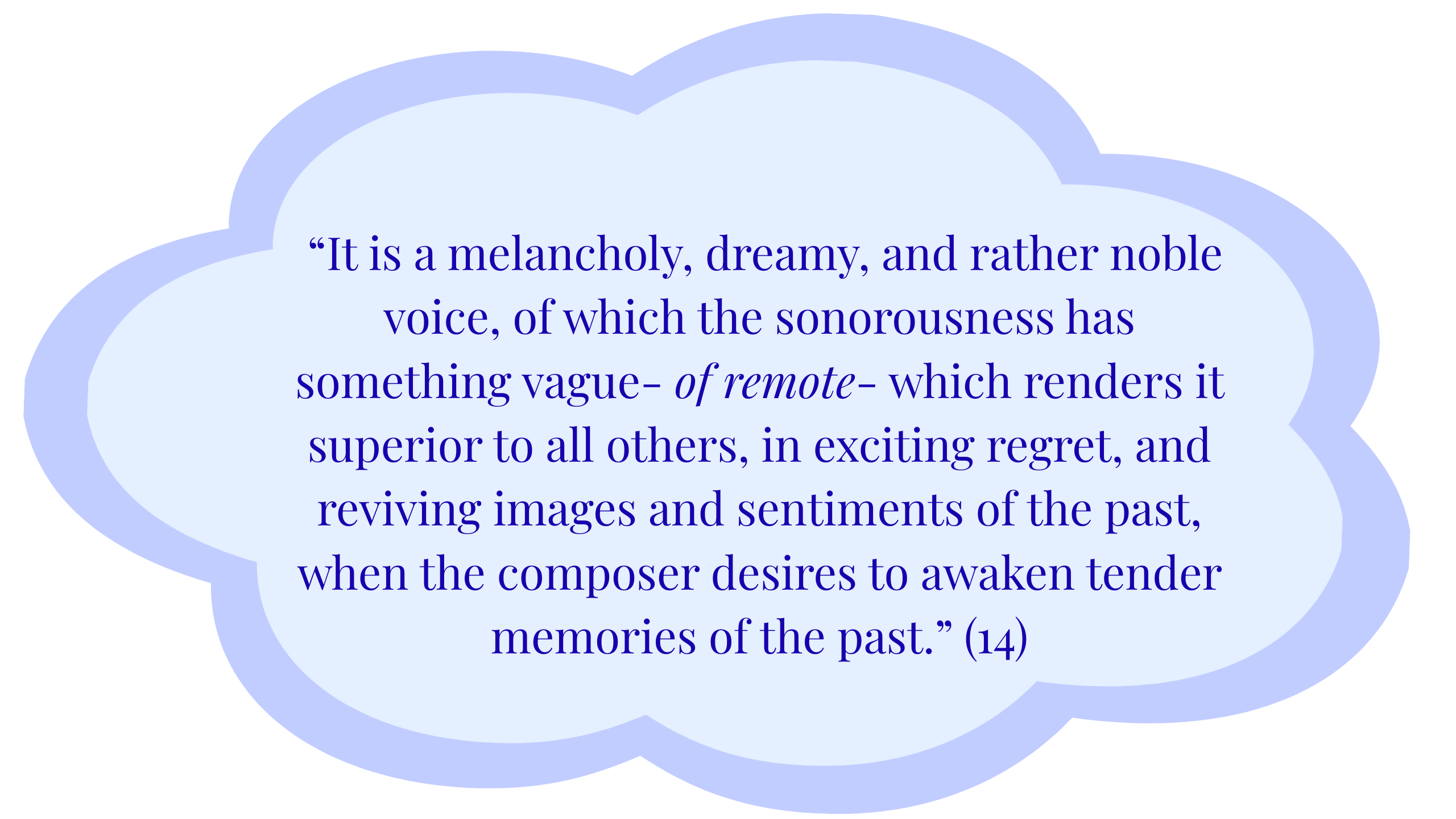
Berlioz’s statement certainly holds true in Italian and French operas, where numerous solos showcase the English horn’s expressive qualities. The instrument was also used increasingly in symphonic repertoire by composers throughout Europe. The following is a small number of selections from the nineteenth century repertoire which include significant English horn excerpts. Please refer to this Youtube playlist for recordings of each selection.
Opera Examples:
- Vincenzo Bellini, Il Pirata: act 2, no. 25 (1827)
- Gaetano Donizetti, Maria di Rohan: no. 13, Havvi un dio (1843)
- (Donizetti also wrote a lovely concertino for English horn and orchestra!
- Giuseppe Verdi, Ballo in Maschera: act 2 "Ma dall'arido stelo" (1859)
- Hector Berlioz, La Damnation de Faust, op. 24 (1846)
- Gioachino Rossini, William Tell Overture (published in Paris in 1829), solo starts at 06:15
Symphonic Repertoire:
- Hector Berlioz, Symphonie Fantastique: mvt 2, Un Bal (1830)
- Antonin Dvorak, Symphony No. 9, The New World: mvt 2, Largo (1893)
- Jean Sibelius, The Swan of Tuonela (1895)
- Richard Straus, Ein Heldenleben (1898)
Interestingly, the English horn fell out of favor in German- speaking areas of Europe during the Romantic Era. Many composers favored the basset horn (a type of low clarinet) over the English horn- Mozart may have been to blame for this.
Thankfully, Richard Wagner changed the course of the English horn’s history when he incorporated it in his 1845 opera, Tannhäuser. Although it did not lead to immediate acceptance of the instrument by German and Austrian composers, Wagner’s advocacy for the English horn did significantly increase its usage in opera and eventually symphonic repertoire as well. (15) The example below is from Act 1, scene three.
Twentieth Century & Modern Usage
As we have seen, the English horn became a favorite of many composers for lyrical solos in opera and symphonic works. Many twentieth and twenty first century composers have embraced the English horn as a solo instrument.
One significant work featuring the English horn from the early 20th century is William Grant Still’s Symphony no. 1, “Afro-American Symphony” (1924)
An extensive list of 20th and 21st century solo and chamber repertoire for English horn, made available by Carolyn Hove, showcases the versatility of the instrument.
These days there are so many wonderful chamber and solo pieces for English horn that it would be impossible to highlight them all. The author has chosen to feature one particularly unusual piece, Christopher Berg’s, “Why Else Do You Have An English Horn?” for English Horn and Actor, performed here by Natalie Lorch, English horn, and Nancee Moes, Actress.
Conclusion
From its humble beginnings in the early 18th century, the English horn has evolved into the charming and expressive instrument that we know and love today. Here at Hodge Products, we strive to provide top of the line products for the discerning English horn enthusiast at all levels. Check out our website for the current list of reeds, cane, staples, reed cases, tools, and more!
Questions? Contact us through our website. We’re happy to help!
Go to Intro
Go to Chapter 1
Go to Chapter 3
End Notes
- Finkelman, Michael. “Oboe, III. Larger and Smaller European Oboes, 4. Tenor Oboes, (iv.) English Horn” Grove Music Online. 2001.
- Finkelman, Michael. “The Lower Oboes: Genesis and Development, The English Horn.” unpublished manuscript, 2022, typescript, 1.
- Finkelman, Michael. “The Lower Oboes: Genesis and Development, The English Horn.” unpublished manuscript, 2022, typescript, 1.
- Gluck, Christoph Willibald. Orfeo Ed Euridice, Act 1, 1762. Derek Lee Ragin and the English Baroque Soloists. July 26, 2018, Youtube. https://www.youtube.com/watch?v=R1NS6zGnUbM&list=PLk-IgAEKYl2wkXAs6Le5zzF-VD9vniMAg&index=6
- Haydn, Franz Joseph. Symphony no. 22, “The Philosopher”, H.I. 22. Performed by Orchestra UniMi. December 3rd, 2014, YouTube. https://www.youtube.com/watch?v=S1KmoKfp6Ow&list=RDS1KmoKfp6Ow&start_radio=1
- “Giuseppe Ferlendis Biography,” Giuseppe Ferlendis Concorso Internazionale per Oboe, Associazione Musicale Ferlendis. Accessed August 19th, 2025. https://www.oboeferlendis.it/en/giuseppe-ferlendis.html
- Ferlendis, Giuseppe. Concerto for English horn in F Major: I, Allegro. Performed by Marino Bedetti and the Giuseppe Ferlendis Orchestra. February 21, 2015. Youtube. https://www.youtube.com/watch?v=T8PYK3Cs8dM&list=RDT8PYK3Cs8dM&start_radio=1
- Proctor, Judy. “The Teimer Oboe Virtuosi and their patrons, the Prince Schwarzenbergs of Bohemia,” The Lonarc Oboe Trio. July, 2019. https://www.lonarcoboetrio.com/the-teimers-and-schwazenbergs
- Finkelman, Michael. “The Lower Oboes: Genesis and Development, The English Horn.” unpublished manuscript, 2022, typescript, 3.
- Beethoven, Ludwig van. Trio for two oboes and English horn in C Major, op. 87. Performed by Marilyn Zupnik, Kathryn Greenbank, and Elizabeth Starr Masoudnia. September 30th, 2020. Youtube. https://www.youtube.com/watch?v=B2ZJn6FAnMU&list=RDB2ZJn6FAnMU&start_radio=1
- Finkelman, Michael. “The Lower Oboes: Genesis and Development, The English Horn.” unpublished manuscript, 2022, typescript, 4.
- Finkelman, Michael. “The Lower Oboes: Genesis and Development, The English Horn.” unpublished manuscript, 2022, typescript, 6.
- Finkelman, Michael. “The Lower Oboes: Genesis and Development, The English Horn.” unpublished manuscript, 2022, typescript, 7.
- Berlioz, Hector. A Treatise Upon Modern Instrumentation and Orchestration. Translated by Mary Cowden Clarke. Novello, Ewer, and Company, NY, 1858. 96.
Finkelman, Michael. “The Lower Oboes: Genesis and Development, The English Horn.” unpublished manuscript, 2022, typescript, 8. - Still, William Grant. Symphony No. 1, “Afro-American Symphony.” Performed by the Tampa Bay Symphony. May 7th 2023, Youtube. https://www.youtube.com/watch?v=W3FVFwCbsJY
- Berg, Christopher. “Why Else Do You Have An English Horn?” Performed by Natalie Lorch, English horn, and Nancee Moes, Actress. April 20th, 2013. Youtube. https://www.youtube.com/watch?v=dLQYh-xo6-A

